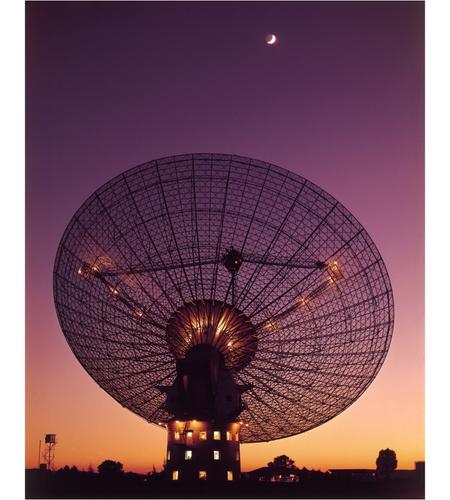
The Parkes telescope around the time of the Apollo 11 Moon landing in 1969: image CSIRO
It may be 40 years since man first set foot on the Moon, but only now will people see the “real life” quality footage of Apollo 11 Moonwalk thanks to NASA and the Commonwealth Scientific and Industrial Research Organisation's (CSIRO) Parkes Radio Observatory.
To celebrate the 40th anniversary of the mission, NASA has released enhanced and digitally re-mastered copies of television recordings of the Apollo 11 Moonwalk taken from Australian telescopes on July 21, 1969.
NASA’s video collection can be viewed online at its Web site.
The videos released today show Apollo 11 mission commander Neil Armstrong’s first step on the Moon’s surface, Buzz Aldrin’s descent of the Lunar Module ladder, the plaque reading and the raising of the US flag.
The footage was taken from the CSIRO’s Parkes Radio Observatory and the Honeysuckle Creek tracking station outside Canberra.
According to the CSIRO, the new enhancements transform the blurry footage that was relayed by live television to an estimated 600 million people in 1969.
The new footage has surfaced after a three-year search by a team of Australian and American Apollo 11 Mission researchers for the original high-quality video recordings of the Moonwalk.
At the time of the landings, engineers recorded the video onto 1-inch magnetic data tapes at the three tracking stations – Honeysuckle Creek, Parkes and NASA’s Goldstone station in California.
The tapes ended up at the Washington National Records Center (WNRC) in Maryland, but, according to NASA, the original recordings of the event may be lost forever as it is “likely” they were erased and reused.
However, the search did uncover the best available television recordings of the Moonwalk from which the digitally re-mastered footage was sourced.
John Sarkissian, the CSIRO scientist who initiated the search, has raised the possibility that backup tapes of the mission recorded at Parkes might still exist.
Sarkissian said his interest in the whereabouts of the original tapes was triggered in 1997 when he started researching the role the Parkes Observatory (known as “The Dish”) had played in the Apollo 11 Mission.
“I realised very quickly that the data tapes contained video recordings that were superior to the footage broadcast ‘live’ to the world and which were the best currently available to the public,” Sarkissian said.
His 2006 report led to NASA announcing an official search for the missing tapes.
Sarkissian said he was then alerted by a letter, written in the early 1990s by The Dish’s former director John Bolton, to the existence of a set of backup video tapes made at Parkes.
Subsequent talks with the engineer responsible for making those recordings confirmed the existence of the backup tapes.
“[We] have spent the last few years looking for those tapes and, although we haven’t found them yet, we are still hopeful, particularly as there is no record or other evidence that they were destroyed or lost,” Sarkissian said.
“They could still be stored somewhere and, with a bit of luck, the publicity about the release of details of NASA’s report on the official search for the tapes might jog someone’s memory.”
Join the CIO Australia group on LinkedIn. The group is open to CIOs, IT Directors, COOs, CTOs and senior IT managers.
